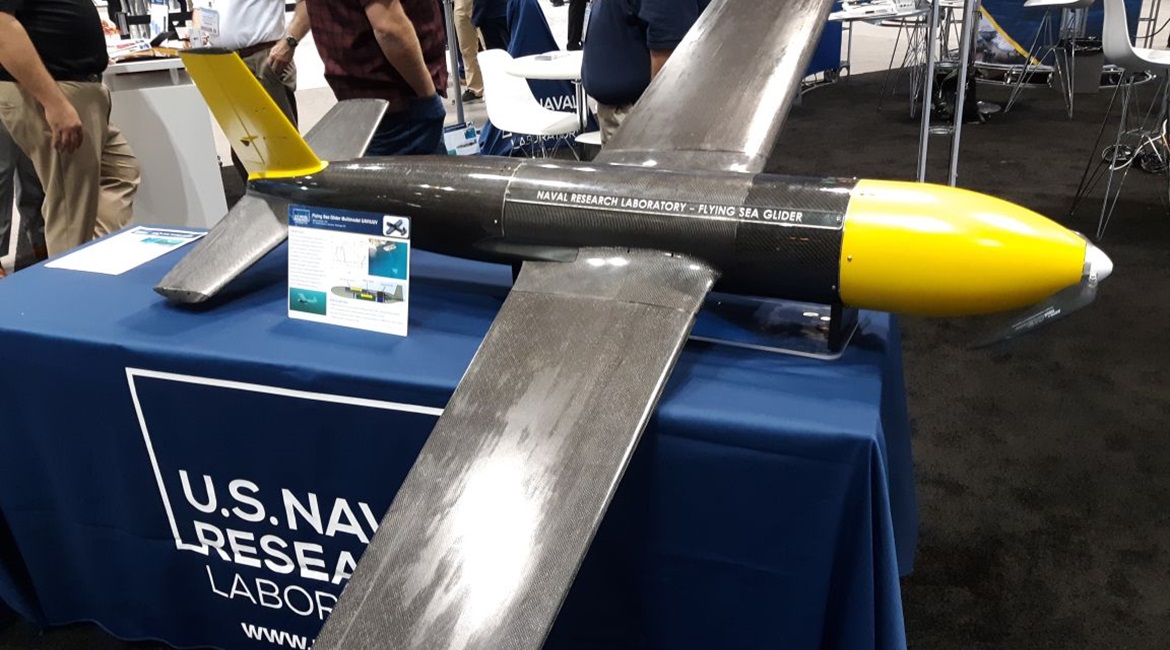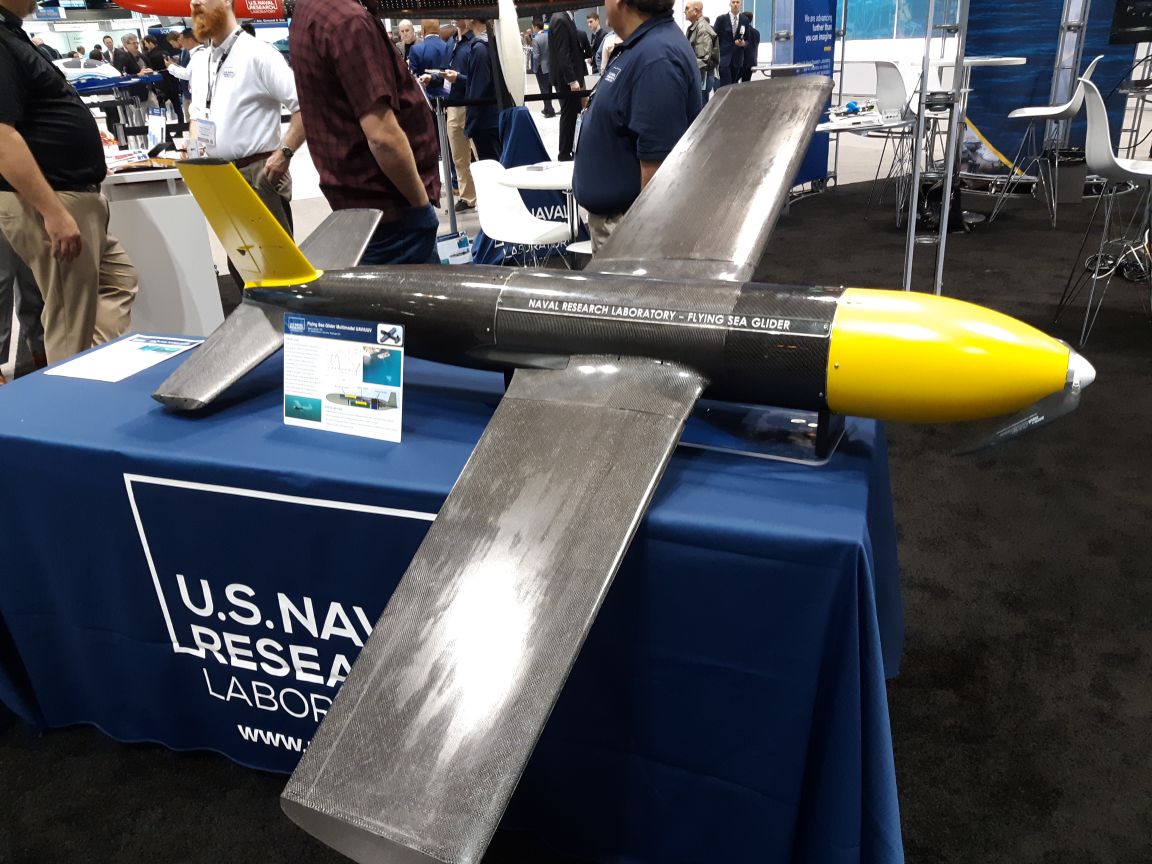
The US Naval Research Laboratory (NRL) has developed a Flying Sea Glider underwater glider that delivers itself by flying above the water, extending the range of unmanned undersea vehicles (UUVs).
Stearns Heinzen, NRL research engineer, told Jane’s on 30 April that UUVs that deliver themselves in the air, known as flying emplacement, have potential military value. UUVs, he said, typically operate solely underwater, meaning they have to be physically delivered to a location because they travel slowly.

The NRL developed the Flying Sea Glider, a UUV that is capable of flying above water. (IHS Markit/Pat Host)
Heinzen said by flying emplacement, the NRL is able to quickly get its UUV to a location in a time-critical manner without having to deploy a ship to support it. Unmanned aircraft typically fly two orders of magnitude faster than sea-gliding UUV. The Flying Sea Glider, he said, is able to get to a destination on its own from ship or shore and send data back within a couple hours.
Airborne propulsion is battery-electric with a folding propeller. Underwater propulsion is accomplished via a large-volume buoyancy engine and hydrodynamic gliding. The Flying Sea Glider performs porpoise-type missions in which it dives down, takes data on the way down, and then transmits the data from the surface.
Heinzen said the craft can also take data on the way up. The design depth for this Flying Sea Glider variant, he said, is 200 m. The Flying Sea Glider protects sensitive aircraft components by having both dry and wet spaces. One volume, he said, can incorporate dry sensors that go through bulkhead connectors and out to sensors in the water. Because many UUV sensors are designed to be wet, Heinzen said these go in the wet space.
Looking to read the full article?
Gain unlimited access to Janes news and more...






